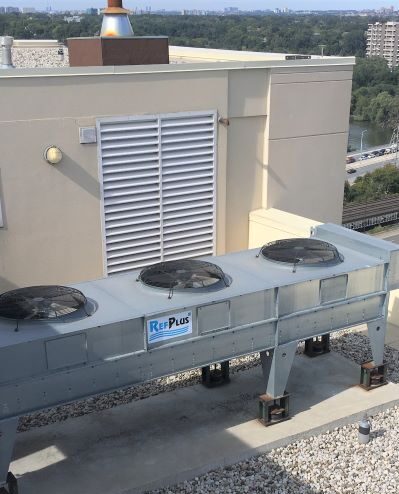Condominium managers and property managers often receive complaints from condo residents about noise. Managers must investigate and try to address the complaints. Mechanical noise issues can arise in any building, but mitigating them in modern wood structures can be more challenging.
More...
Complaints about noise caused by people in the building are covered by other articles. Here I will deal with complaints about mechanical equipment noise.
Identifying the noise source
Property managers must investigate and try to resolve the complaints. Before the management can mitigate the noise, its source must be determined. The troubleshooting approach is simple:
This approach will reveal the offending equipment that must be modified to reduce the noise. This process usually requires the participation of the equipment maintenance personnel. Sometimes the guidance of an acoustical consultant is beneficial.
The noise path from the equipment to the complainant’s apartment is almost always structural. The noise is transmitted by the building structure, sometimes far from the equipment. The cause of the noise is usually incorrect equipment installation. The offending equipment must be reinstalled with proper vibration isolation to mitigate the noise.
How much mechanical noise is acceptable?
Noise is ever-present in the environment. A tranquil space does not exist. Property managers often ask what noise level in dwellings is “normal.”
The question of rating interior noise is complicated due to many interrelated factors.
Human factors.
Sensitivity to noise is subjective and individual. Some people are bothered by noises that, to others, seem slight or even inaudible.
Physical factors.
Sound is a complicated physical phenomenon. Sound has many characteristics that influence its annoyance levels to people. Some of the physical factors are:
What is the maximum noise level acceptable in a residential apartment?
The answer to this question is not as easy as it seems. As far as I know, no legislated requirements state Ontario's maximum permissible noise levels in dwellings.
Municipalities set the maximum permissible noise limits, usually addressing exterior noise levels. In Ontario, the MOE document NPC-300 guides the municipalities.
Toronto noise bylaw regulates outdoor noises. However, I have heard of Toronto noise bylaw officers using it for mechanical noises indoors. This is nonsensical, classifying noise levels at 50 dBA as acceptable.
Industry organizations provide guidelines for maximum noise levels. The most common in North America is ASHRAE. ASHRAE defines several criteria for rating noise levels. Consultants often use the ASHRAE recommendations to rate the acceptability of interior noise. The test must be done in accordance with ANSI/ASA Standard S12.72. However, this approach has a limitation:
World Health Organization (WHO) has noise guidelines based on ISO standards that are more stringent than ASHRAE.
This leaves much discretion to consultants on how to select and apply these guidelines.
The intrusiveness of noise.
Some consultants also use subjective descriptions of “intrusiveness” to assess noise annoyance. This definition probably originated in a textbook on acoustics.
Intrusiveness: The intrusiveness of noise mainly depends on its relative amplitude compared to the background noise at the receptor location. It is commonly considered that if the overall sound level is 1-3 dBA above the background, it is assessed subjectively as “insignificant”; 3-5 dBA above the background is assessed as being subjectively “noticeable”; if the overall sound level is 5-10 dBA above the background, it is assessed subjectively as “significant.” It is also commonly accepted that a 10 dB increase in noise levels is subjectively equivalent to a doubling of sound levels for individuals. For an extraneous noise to be inaudible, it must be at least 10 dB lower than the background noise.
Summary – dealing with mechanical noise complaints.
It is usually possible to identify the mechanical noise source with adequate effort. However, the mitigation may be expensive. The property managers are reluctant to address low-level noise and seek advice on how much noise is acceptable. Acoustical consultants provide recommendations, but due to the complexity of the problem and lack of clear standards, the recommendations can be challenged and disputed.
For readers interested in more in-depth treatment of noise-related issues in buildings, visit this British document.
Thank you for reading this article. We always appreciate the reader's feedback. Please complete and submit the form below.
If you have an intransigent noise problem, please request our help using the button below.
